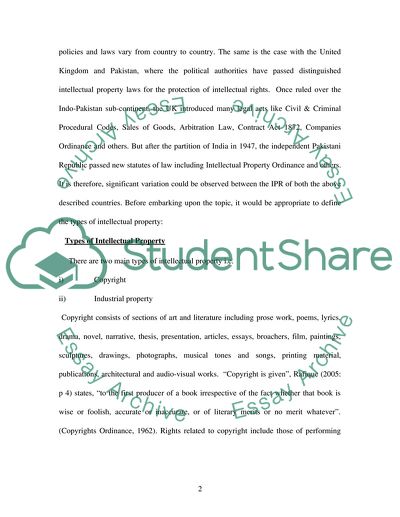Cite this document
(UK vs. Pakistan Intellectual Property Rights Comparison Essay, n.d.)
UK vs. Pakistan Intellectual Property Rights Comparison Essay. https://studentshare.org/law/1547917-compare-and-contrast-intellectual-property-rights-in-two-regions-comment-on-the-difficulties-faced-in-an-increasingly-globalised-world
UK vs. Pakistan Intellectual Property Rights Comparison Essay. https://studentshare.org/law/1547917-compare-and-contrast-intellectual-property-rights-in-two-regions-comment-on-the-difficulties-faced-in-an-increasingly-globalised-world
(UK Vs. Pakistan Intellectual Property Rights Comparison Essay)
UK Vs. Pakistan Intellectual Property Rights Comparison Essay. https://studentshare.org/law/1547917-compare-and-contrast-intellectual-property-rights-in-two-regions-comment-on-the-difficulties-faced-in-an-increasingly-globalised-world.
UK Vs. Pakistan Intellectual Property Rights Comparison Essay. https://studentshare.org/law/1547917-compare-and-contrast-intellectual-property-rights-in-two-regions-comment-on-the-difficulties-faced-in-an-increasingly-globalised-world.
“UK Vs. Pakistan Intellectual Property Rights Comparison Essay”. https://studentshare.org/law/1547917-compare-and-contrast-intellectual-property-rights-in-two-regions-comment-on-the-difficulties-faced-in-an-increasingly-globalised-world.


